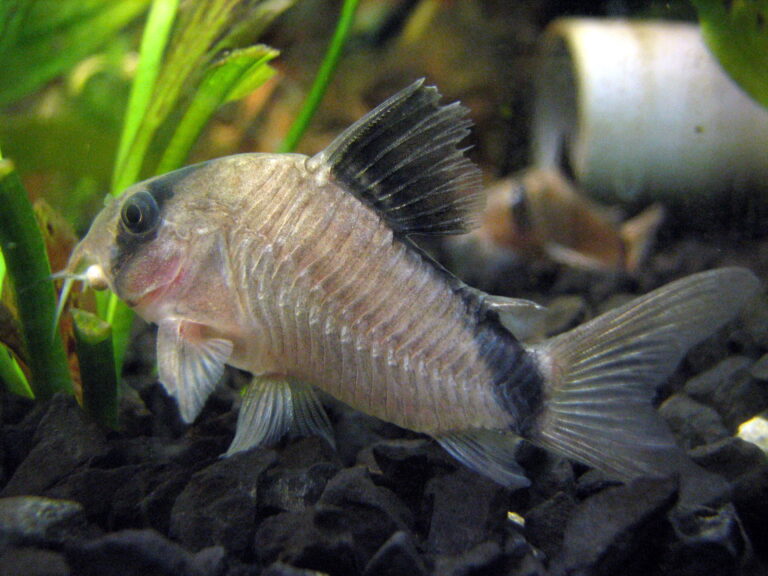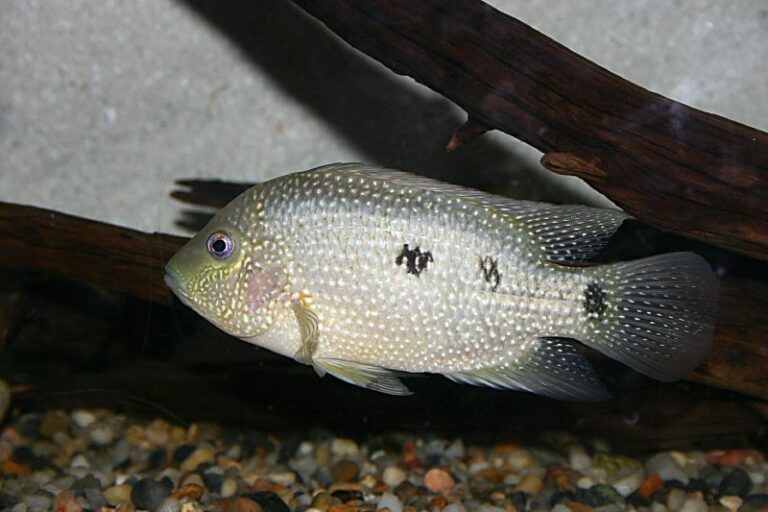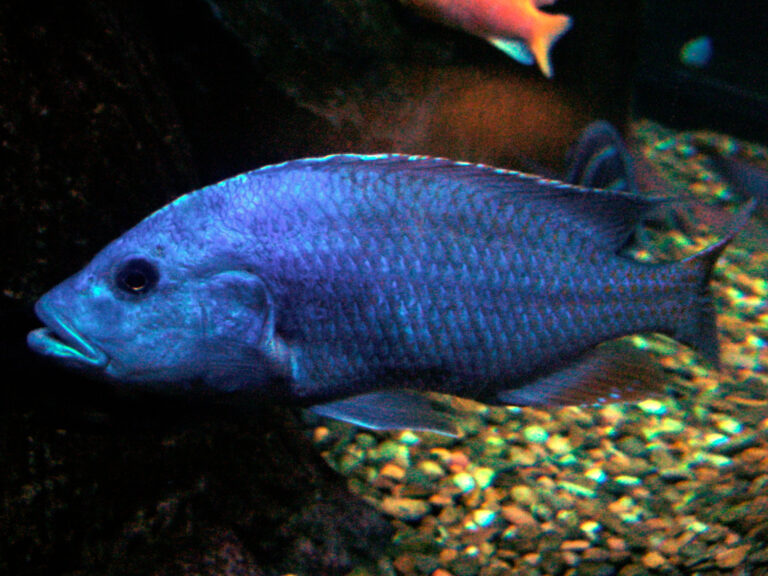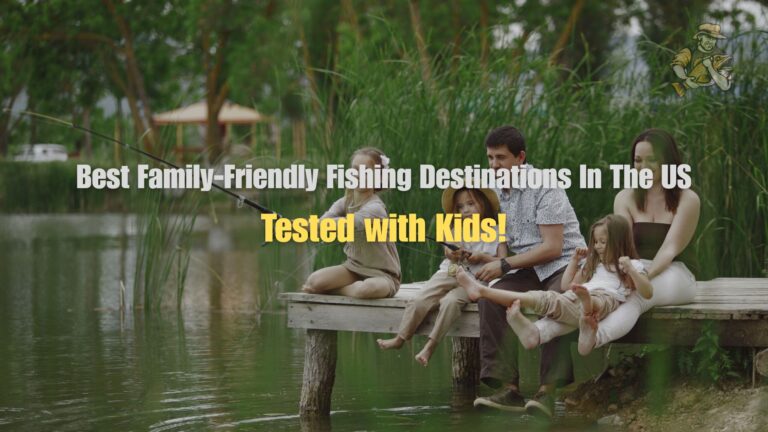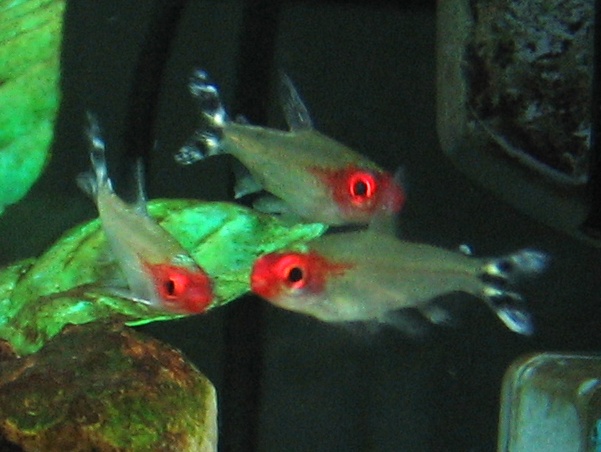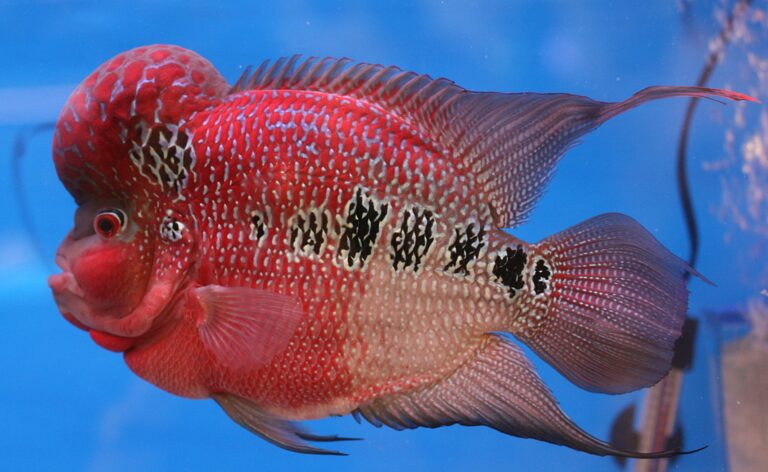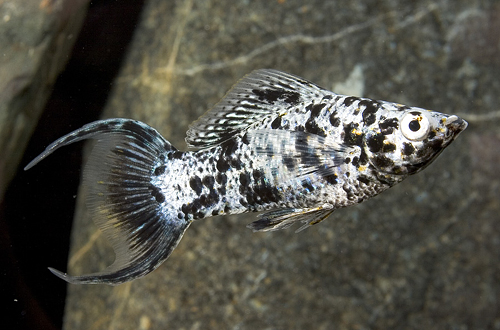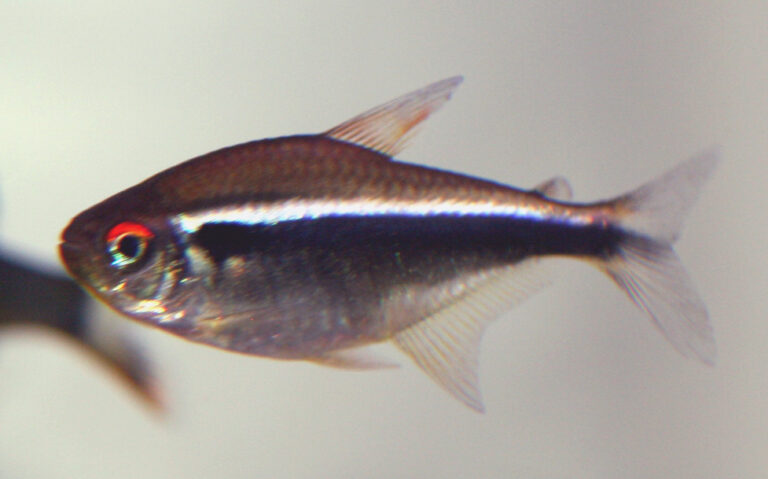Master Deep Ocean Fishing: Proven Methods for Massive Catches
By Adam Hawthorne | Last Modified: May 7, 2025
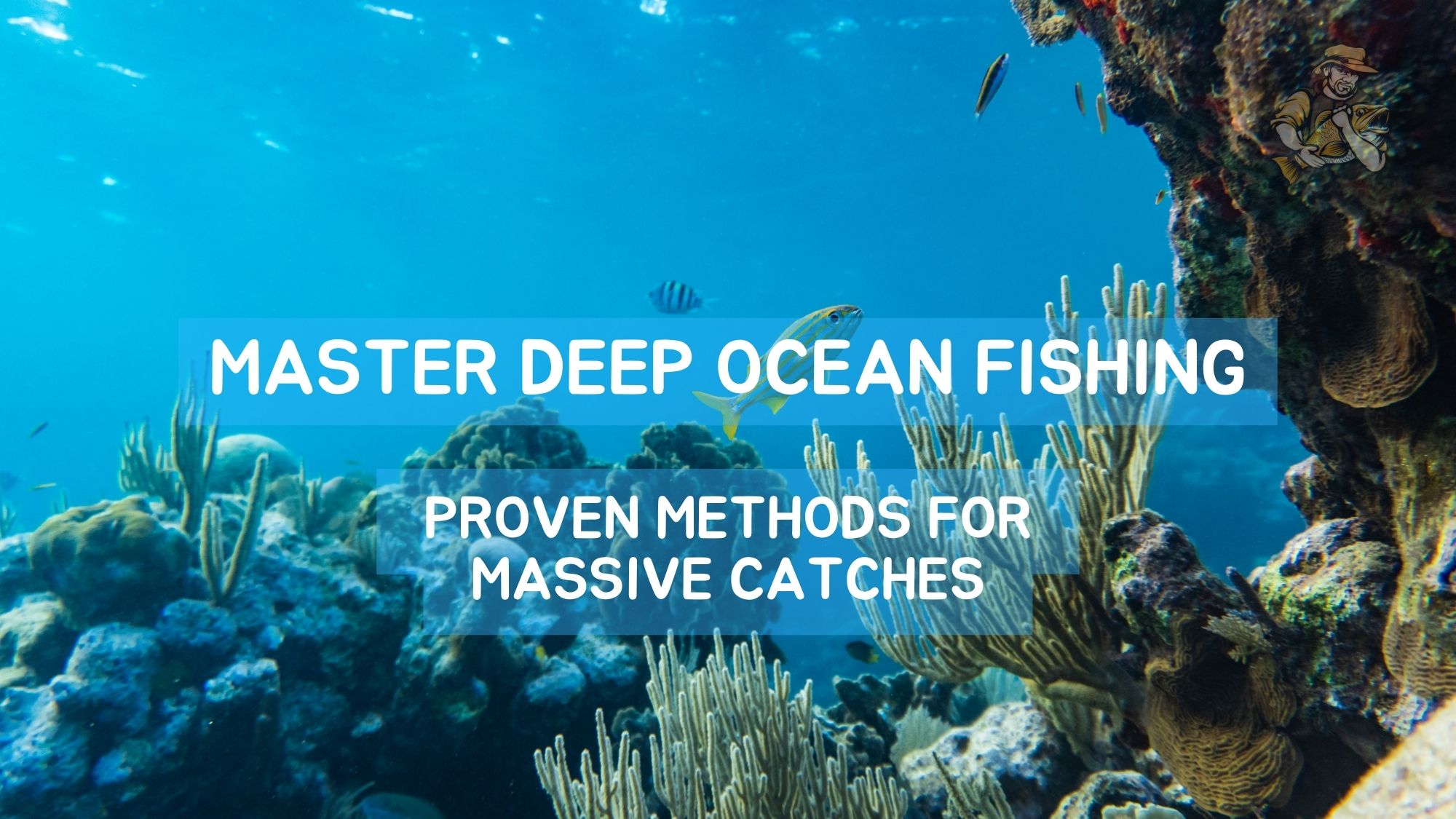
There’s something almost magical about heading far offshore, where the continental shelf drops away and you’re floating above thousands of feet of water. Deep ocean fishing offers some of the most thrilling experiences and impressive catches available to anglers, but it also comes with unique challenges that can frustrate even experienced fishermen. I’ve spent countless hours in blue water, sometimes returning with incredible stories and other times with nothing but a sunburn and an empty cooler.
After three decades of offshore adventures (and misadventures), I’ve learned that success in the deep blue requires specialized knowledge, proper preparation, and techniques that differ significantly from inshore approaches. Whether you’re dreaming of landing your first marlin or hoping to fill the freezer with mahi-mahi steaks, this guide will help you navigate the challenges of the open ocean.
Why Deep Ocean Fishing Is Different Than Anything Else
Most fishing beginners start in freshwater or near-shore environments, where conditions are relatively predictable and fish behavior follows familiar patterns. When you venture into deep ocean waters, almost everything changes.
In the open ocean, you’re dealing with larger fish that often travel in schools covering vast territories. The currents, depths, and feeding patterns create a completely different environment that requires specialized gear, boats, and techniques. Unlike lake fishing where you might cast to a visible structure, deep ocean success depends on understanding underwater topography you can’t see and locating fish that might be scattered across miles of open water.
I remember my first offshore trip in the Gulf of Mexico about 15 years back. I’d brought the same tackle I’d used for lake fishing my whole life, thinking “fish are fish.” By noon, I’d lost two reels to powerful runs from fish I never even saw. The lesson cost me nearly $300 in equipment, but it taught me that deep ocean fishing is an entirely different game.
Key Differences That Will Make or Break Your Trip
When fishing the deep ocean, you’ll need to contend with:
- Powerful, fast-moving gamefish that can strip hundreds of yards of line in seconds
- Constantly changing conditions including current, temperature, and weather
- The need to locate productive areas in a seemingly endless expanse of water
- Specialized heavy-duty gear that can handle extreme pressure
- Fish that might be feeding anywhere from the surface to hundreds of feet deep
- The logistics of fishing far from shore, often beyond sight of land
Success requires understanding these challenges and preparing specifically for them. I’ve seen many skilled freshwater anglers struggle their first time offshore because the fundamentals are so different.
Essential Gear for Deep Ocean Fishing Success
The right equipment makes all the difference between landing trophy fish and telling stories about the ones that got away. I’ve learned through painful experience (and thousands of dollars in lost or damaged gear) that quality matters exponentially more in deep water.
Rods and Reels – When Bargain Hunting Becomes Expensive
For deep ocean fishing, you’ll need sturdy rods rated for heavy lines and large fish. Depending on your target species, look for:
- 20-50 pound class rods for smaller pelagics like mahi-mahi and small tuna
- 50-80 pound class for medium gamefish like wahoo and yellowfin tuna
- 80+ pound class for marlin, swordfish, and other billfish
When it comes to reels, conventional (round) reels with lever drags are standard for most deep ocean applications. I was a die-hard Penn fan until about five years ago when I tried some of the higher-end Shimano models. The difference in the drag smoothness was immediately noticeable, especially when fighting yellowfin tuna that make those incredible deep runs.
For trolling setups, I’ve found that reels with line capacities of at least 500 yards of 50-pound test are essential. Anything less, and you’re asking for trouble when a big fish decides to sound. Tommy still laughs about the time I hooked what was probably a decent marlin off the coast of North Carolina, only to watch helplessly as it emptied my too-small reel in what seemed like seconds.
Some folks will tell you that you need the most expensive gear on the market. I disagree. While quality matters, there’s a middle ground. I’ve been using the same mid-range Shimano Talica reels for about eight years now, and they’ve handled everything from dolphin (mahi-mahi) to a 300+ pound blue marlin last summer off the Florida coast.
Line and Leader Selection – The Critical Connection
Line selection for deep ocean fishing depends primarily on your technique:
- For trolling: 30-80 pound monofilament or 50-150 pound braid with fluorocarbon leaders
- For deep dropping: 30-80 pound braid with fluorocarbon leaders
- For chunking or live baiting: 30-50 pound fluorocarbon or monofilament
I’ve switched almost entirely to braid for my main lines, with only one trolling setup still spooled with mono. The sensitivity and capacity advantages of braid are just too significant to ignore. However, I always use a fluorocarbon or monofilament leader of at least 15-20 feet, as I believe the stretch and visibility properties provide an advantage when a fish is close to the boat.
Leader strength should generally match or exceed your main line strength. For toothy species like wahoo or barracuda, I’ll add a short section of single-strand wire, usually about 3-4 feet. Some purists avoid wire for marlin and tuna, believing it reduces bites, but I’ve found that properly deployed wire leaders don’t significantly impact strike rates on most species.
Terminal Tackle – Details Matter More Than Most Realize
Hooks, swivels, and connections require special attention for deep ocean fishing. I exclusively use circle hooks when targeting billfish, as they dramatically increase survival rates for released fish while actually improving hookup percentages. For tuna and mahi, I’ll sometimes use J-hooks, particularly with artificial lures.
Quality matters tremendously here – I learned this lesson the hard way during a trip out of Key West in 2018. We were into a hot yellowfin bite about 80 miles offshore when the cheap swivel on my buddy’s rig failed, losing what the captain estimated was a 70+ pound fish. After traveling that far and investing that much in the trip, losing a trophy fish to a $2 part is a special kind of frustration.
I now exclusively use ball-bearing swivels for any trolling application. They’re considerably more expensive than standard barrel swivels, but the difference in performance when a 50-pound tuna is greyhounding across the surface is remarkable. For connections, I rely on the improved clinch knot for most applications, though I’ve recently started using the FG knot for braid-to-leader connections after learning it from a charter captain in the Outer Banks.
Locating Deep Ocean Fish – The Most Crucial Skill
Finding fish in the vast expanse of ocean is arguably the most challenging aspect of deep ocean fishing. While electronics and experience help, understanding how oceanographic features affect fish behavior is essential.
Temperature Breaks and Current Edges
Temperature breaks (where warm and cold water meet) create natural feeding zones that attract baitfish and, consequently, predators. During a trip in the Gulf Stream off North Carolina, we located a temperature break of nearly 7 degrees within less than a mile. The action along that edge was incredible – we landed 11 mahi between 15-25 pounds in less than two hours.
Current edges, where different water movements create visible lines on the surface, function similarly. These edges often collect floating debris, seaweed, and baitfish, creating entire floating ecosystems. Some of the best current edges I’ve fished were in the Gulf of Mexico, where loop current formations create predictable edges that hold everything from tripletail to marlin.
Modern fishing electronics can display sea surface temperature maps that help locate these productive zones. Real-time oceanographic data services have revolutionized offshore fishing, allowing captains to target these productive areas with unprecedented precision. On my boat, I use a combination of satellite services and onboard electronics to locate these features.
Structure and Bottom Contours
Even miles offshore, underwater structure influences fish location. Seamounts, canyons, and ledges create upwellings that bring nutrient-rich water to the surface, attracting baitfish and predators. The continental shelf edge is particularly productive, as the relatively shallow water drops off dramatically into the deep.
The Hudson Canyon off New York is one of my favorite examples. This underwater canyon extends from about 100 miles offshore to nearly the coast, creating a highway for migratory pelagics. During a particularly memorable trip in September 2019, we positioned over the canyon edge and landed four yellowfin tuna in the 60-80 pound range within an hour.
Bottom contour doesn’t just matter for bottom fishing, either. Even when targeting surface-feeding pelagics like mahi or marlin, positioning over significant bottom structure often improves catch rates dramatically. I’ve found that understanding how these underwater features affect current and baitfish movement is one of the most valuable skills for consistent offshore success.
Floating Objects and Debris
In the open ocean, anything floating attracts life. From commercial fish aggregating devices (FADs) to random floating debris, these objects create mini ecosystems that can hold impressive numbers of gamefish.
During a trip off Miami about 8 years ago, we approached what looked like a small piece of floating wood from a distance. As we got closer, we discovered it was actually a waterlogged wooden pallet. Circling that single pallet, we caught 23 mahi-mahi, 2 small blackfin tuna, and raised a white marlin that we didn’t hook. All that action from a piece of junk floating in thousands of feet of water!
I always carry a pair of powerful binoculars and constantly scan the horizon for birds, debris, or anything unusual on the surface. Some of my most productive days offshore have come from investigating random floating objects that turned out to be surrounded by gamefish.
Most Effective Deep Ocean Fishing Techniques
With the right gear in the right location, you’ll need to employ specific techniques to target deep ocean species. Here’s what I’ve found most effective over the years:
Trolling – Speed, Spread, and Presentation Matter
Trolling is the bread and butter of deep ocean fishing, allowing you to cover water efficiently while presenting multiple baits at various depths. For most pelagic species, trolling speeds between 6-9 knots are standard, though specific situations might call for speeds outside this range.
Your trolling spread (the arrangement of lines behind the boat) should cover different distances and depths. A typical offshore spread might include:
- Short rigger baits positioned 50-75 feet behind the boat
- Long rigger baits 100-150 feet back
- Flat lines directly off the transom 25-30 feet back
- A shotgun bait positioned far back (200+ feet) in the clean water
I learned an important lesson about trolling speeds from a charter captain in the Florida Keys named Captain Mike. We were targeting wahoo, which typically prefer faster presentations. Rather than trolling at a constant speed, he would occasionally surge the throttle forward, increasing our speed by 2-3 knots for about 30 seconds before returning to normal trolling speed. This action made the lures suddenly accelerate, often triggering explosive strikes. I’ve incorporated this technique into my own trolling and found it particularly effective for wahoo and tuna.
Deep Dropping – The Frontier of Deep Ocean Fishing
Deep dropping targets species that live along the bottom in very deep water, typically 600-1200 feet. This specialized technique requires electric reels, heavy weights (often 3-5 pounds), and specific terminal tackle arrangements.
During a Gulf of Mexico trip focusing on deep dropping, we targeted tilefish, grouper, and swordfish at depths between 800-1200 feet. I brought what I thought was a robust conventional reel setup, but after manually cranking up two fish from nearly a quarter-mile deep, I was completely exhausted. The next day, I borrowed the captain’s electric reel setup and was amazed at the difference. Since then, I’ve invested in a Shimano Beastmaster electric reel that has dramatically improved my deep dropping experience.
The most productive deep drop rigs I’ve used consist of multiple hooks (usually 3-5) spaced about 12-18 inches apart above a heavy weight. Squid, cut bait, or a combination works well for most deep water species. Tipping hooks with artificial attractants has also improved my catch rates considerably.
Chunking and Live Baiting – When Patience Pays Off
For species like tuna and swordfish, chunking (deploying cut bait pieces to create a chum slick) and live baiting are exceptionally effective techniques. These methods require more patience than trolling but often produce larger, more selective catches.
Chunking is particularly effective when you’ve located a school of fish on your electronics or when fishing known productive areas. I typically use a 7/0 circle hook on a fluorocarbon leader for chunking, with a small weight positioned about 6 feet above the hook to control depth. The key is maintaining a consistent chum slick while allowing your baited hook to drift naturally with the chunks.
Live baiting is my go-to technique for targeting trophy fish once we’ve located them. Nothing beats a frisky live bait for enticing large predators. For tuna and marlin, I prefer using small bonito, mackerel, or large pilchards rigged with circle hooks. The hook placement depends on the bait species and targeted gamefish, but I generally prefer bridle rigging for most applications as it keeps the bait alive longer and improves hookup percentages.
Species-Specific Tactics That Changed My Success Rate
Different deep ocean species require specific approaches. Here are tactics I’ve found particularly effective for some popular offshore targets:
Yellowfin and Bluefin Tuna – Go Deep When Others Stay Shallow
While many anglers target tuna near the surface, I’ve found that deeper presentations often produce larger fish, especially during midday hours. Using weighted baits or deep-running lures to reach depths of 100-300 feet has dramatically improved my success with trophy tuna.
During a memorable trip to the canyons off New Jersey, everyone was trolling the surface with spreader bars and daisy chains. We caught a few smaller fish this way, but when we switched to deep-running lures and weighted baits at around 150-200 feet, we connected with considerably larger yellowfin in the 70-100 pound class.
For bluefin tuna, I’ve had tremendous success with kite fishing live baits when conditions permit. The natural presentation of a struggling bait on the surface can be irresistible to cruising bluefin. I learned this technique from a grizzled captain named Dave about ten years ago in Cape Cod. His simple approach of flying a single live mackerel under a kite landed us a 472-pound bluefin after nearly three hours of battle.
Marlin – Patience and Teaser Strategy
Billfish require specialized tactics, with teaser combinations and bait presentation being crucial elements. I’ve found that running large teasers without hooks (like daisy chains or bowling pins) to create commotion, then presenting hook baits nearby, dramatically increases marlin strikes.
My most effective marlin spread includes two hookless dredge teasers below the surface and two surface teasers on the outriggers. Actual hook baits are positioned strategically behind these teasers where the agitated marlin are likely to find them after being drawn to the commotion.
When a marlin appears in the spread, quickly removing nearby teasers while keeping the target bait in position often converts lookers into strikers. I learned this from watching tournament teams work their spreads with military precision. The coordination required is significant, but the results speak for themselves.
Mahi-Mahi (Dolphin) – The Run-and-Gun Approach
For mahi, I’ve found that covering water and visually searching for floating debris, weed lines, or birds is the most efficient approach. Once you locate a school, keeping a hooked fish in the water to attract others can lead to multiple catches from the same school.
My most productive mahi trip ever came after we spotted a flock of birds working about two miles from our position. Rather than trolling to the location, we reeled in all lines and ran directly to the activity. Upon arrival, we found a massive school of bull dolphin corralling flying fish. By deploying light spinning tackle with small chunks of ballyhoo, we landed 26 mahi between 8-35 pounds in less than an hour.
When targeting larger bull dolphin, I prefer to use live baits rigged on circle hooks. The larger males often stay deeper while smaller fish feed on the surface, and a properly presented live bait will frequently attract these trophy fish when chunk baits fail to do so.
Common Mistakes That Cost Offshore Anglers
Over the years, I’ve made plenty of mistakes offshore – and I’ve seen others make even more. Here are some common errors that can ruin an otherwise promising day on the deep blue:
Inadequate Preparation Leads to Lost Opportunities
The first rule of offshore fishing is preparation. I’ve seen anglers spend thousands on charters only to discover their inadequate physical conditioning makes fighting large fish nearly impossible. Before targeting species like tuna or marlin, develop the core and back strength needed for extended battles.
Equipment preparation is equally important. Before every offshore trip, I meticulously check all drags, connections, and tackle. About seven years ago, I hooked what would have been my personal best blue marlin off the Bahamas. After a 20-minute fight, a overlooked issue with my reel’s drag washer caused it to suddenly lock up, breaking the line instantly. That fish still haunts me, and it taught me the hard way that offshore fishing magnifies every equipment weakness.
Misunderstanding Deep Ocean Fish Behavior
Many anglers approach offshore species with inshore expectations. Deep ocean predators often behave differently, feeding at specific depths, times, and under particular conditions.
I’ve noticed that many offshore trips fail because anglers are unwilling to adjust their tactics as conditions change. Two summers ago, we struggled all morning trolling for tuna with no success. Around midday, we noticed unusual bird activity over a small area. We immediately switched to vertical jigging and caught six blackfin tuna in rapid succession. Flexibility and observation are far more important than rigidly sticking to pre-planned approaches.
Not Respecting the Ocean Environment
The deep ocean demands respect, both for your safety and for the health of the fishery. Always check weather forecasts, file float plans, and carry appropriate safety equipment. I’ve had to abort trips due to unexpected weather changes, and while disappointing, those decisions may have saved lives.
Conservation practices are equally important for sustaining these fisheries. I practice catch-and-release for billfish and always carry proper release tools including dehookers, line cutters, and gloves. For fish we keep, I use methods like immediate bleeding, gutting, and ice slurry immersion to maximize quality.
Planning Your Offshore Adventure – When and Where to Go
The best deep ocean fishing locations vary seasonally as pelagic species follow baitfish migrations and water temperature patterns.
Prime Seasons for Major Species
For yellowfin tuna in the Gulf of Mexico, the period from April through October typically offers the best action, with June-August being prime time. Along the East Coast, tuna follow the Gulf Stream northward, reaching the Mid-Atlantic canyons by June and New England by July-August.
Marlin fishing peaks at different times depending on location. In the Gulf of Mexico, May through September produces the best blue marlin action, while the East Coast sees peak activity from July through September. The Bahamas offer excellent blue marlin opportunities from May through August.
Mahi-mahi are most abundant in the Gulf of Mexico and Florida from April through October, with the peak typically occurring in June and July. As with tuna, they follow the Gulf Stream northward, reaching the Carolinas by May and occasionally pushing as far north as New England by late summer.
Legendary Deep Ocean Fishing Destinations Worth the Trip
While many excellent offshore fishing locations exist, a few stand out for their exceptional productivity:
The edge of the continental shelf off Venice, Louisiana offers what might be the most accessible world-class tuna fishing in the United States. During a trip there last October, we raised yellowfin, blackfin, and even a few bluefin while staying within 40 miles of the mouth of the Mississippi River. The proximity of deep water to shore makes this a uniquely productive area.
For billfish enthusiasts, the waters around Los Sueños, Costa Rica provide perhaps the highest concentration of sailfish in the world during January through April. During a week-long trip there in March 2017, our boat raised over 30 sailfish per day, with multiple blue marlin encounters as well.
Closer to home, the canyons off the Northeast coast from New Jersey to Massachusetts offer world-class opportunities for tuna, marlin, swordfish, and mahi from July through September. The Hudson Canyon in particular has produced some of my most memorable offshore experiences, including an epic night chunking session that yielded five yellowfin tuna over 70 pounds.
If you’re looking for a unique deep ocean fishing experience, the Isla Mujeres area off Mexico’s Yucatan Peninsula hosts one of the world’s great sailfish migrations from January through March. The sight of hundreds of sailfish corralling massive bait balls near the surface is something I’ll never forget from my trip there in 2016.
The Mental Game of Deep Ocean Fishing
Success offshore requires more than just equipment and knowledge – it demands mental fortitude and strategic thinking.
Patience and Persistence Pay Dividends
Unlike inshore fishing where action can be constant, offshore fishing often involves long periods of searching punctuated by intense activity. Maintaining focus during slow periods is essential, as opportunities might present themselves suddenly and briefly.
During a particularly slow day off Ocean City, Maryland, we’d gone nearly six hours without a bite. Several boats in our radio group had already headed in, but our captain insisted on making “one last pass” over a temperature break he’d found. That final effort resulted in a double-header of yellowfin tuna over 60 pounds. Had we given up just 30 minutes earlier, we’d have missed the best fishing of the day.
Reading Changing Conditions Like a Book
Successful offshore anglers develop an almost sixth sense for changing conditions. Subtle shifts in water color, cloud patterns, or bird behavior can signal feeding opportunities. Learning to recognize and quickly respond to these changes separates consistent producers from occasional lucky anglers.
I’ve spent countless hours studying how conditions affect fish behavior in different regions. In the Gulf of Mexico, I’ve noticed that tuna often feed most aggressively just as a weather front approaches, while in the Atlantic, the slack periods between tidal changes frequently produce the best marlin bites. These patterns aren’t absolute, but recognizing them has definitely improved my catch rates over the years.
Safety Considerations For Deep Ocean Fishing
Fishing far offshore involves inherent risks that demand serious preparation. Never compromise on safety equipment or procedures, regardless of experience level.
Essential Safety Equipment That Saved My Life
At minimum, deep ocean fishing vessels should carry:
- EPIRB (Emergency Position Indicating Radio Beacon)
- Life raft with capacity for all passengers
- VHF radio with DSC capability
- First aid kit including trauma supplies
- Flares and visual distress signals
- Life jackets for all aboard
Eight years ago, I experienced a serious engine failure about 70 miles offshore in the Gulf of Mexico. With no cell service and deteriorating weather, our VHF radio and EPIRB were essential in coordinating a safe (if expensive) commercial tow back to port. Since then, I’ve also added a satellite phone to my safety equipment – the monthly service isn’t cheap, but the peace of mind is worth every penny.
Weather Assessment Skills Every Offshore Angler Needs
Understanding how to read weather patterns and knowing when to stay at the dock might be the most important safety skill for offshore fishing. Modern weather services provide excellent forecasts, but conditions can change rapidly at sea. I’ve developed a personal rule – if I have serious doubts about conditions, I simply reschedule. No fish is worth risking safety.
One summer about five years back, several boats from our marina headed offshore despite marginal forecast conditions. While most returned safely, one experienced boaters had to be rescued by Coast Guard helicopter after waves swamped their engines. Since witnessing that incident, I’ve become even more conservative with weather decisions, particularly when fishing beyond immediate rescue range.
The Conservation Side of Deep Ocean Fishing
As offshore anglers, we have a responsibility to protect the resources we enjoy. Sustainable fishing practices ensure these magnificent species remain available for future generations.
Catch and Release Techniques That Actually Work
For billfish and other catch-and-release species, proper handling dramatically improves survival rates. I never remove marlin, sailfish, or large tuna from the water. Instead, I use a dehooker alongside the boat while keeping the fish in the water. If photos are desired, they’re taken quickly while maintaining water flow over the fish’s gills.
Circle hooks have revolutionized billfish conservation by dramatically reducing deep hooking. I exclusively use circle hooks when targeting billfish, and I’ve found they actually improve hookup percentages once you adjust to the different hooking technique (no “setting” the hook, just steady pressure).
Selective Harvesting Makes a Difference
For species we do harvest, I follow a simple philosophy – take only what you’ll use, and focus on abundant species when possible. I’d rather keep a few mahi-mahi for the table than a single large tuna that exceeds my family’s consumption capabilities.
I’ve also become more selective about which individual fish I keep. Releasing larger breeding-sized fish of all species has become standard practice for me, as these individuals contribute disproportionately to future populations. A 15-20 pound mahi provides excellent table fare while allowing the 40+ pound bulls to continue reproducing.
FAQ: Deep Ocean Fishing
What size boat is really needed for safe deep ocean fishing?
While there’s no absolute minimum, I generally recommend at least a 25-foot boat with twin engines for offshore trips beyond 20 miles. More important than length is design – a deep-V hull with high gunwales provides better seaworthiness than a longer but flatter bay boat. For extended trips 50+ miles offshore, I prefer boats 30 feet or larger with substantial fuel reserves. I learned this lesson the hard way when I took my old 23-foot center console 40 miles out years ago and barely made it back on fumes after fighting unexpected currents.
How much should I expect to spend on a basic deep ocean fishing setup?
A quality rod and reel combination for offshore trolling starts around $400-500 and can easily exceed $1000 for premium setups. For a complete offshore arsenal targeting multiple species, budget $2000-5000 for tackle alone. On my boat, I run six trolling setups ranging from 20-80 pound class, plus four jigging setups and two live bait rigs. This provides versatility for most situations, but I’ve accumulated this gear over many years. If you’re just starting, focus on 2-3 quality combos rather than numerous cheaper options.
How far offshore do you need to go to find deep ocean species?
This varies dramatically by location. In some areas like Venice, Louisiana or the Florida Keys, deep water and pelagic species can be found within 10-20 miles of shore. In other regions, you might need to travel 60-100 miles to reach productive grounds. During my trips to the Northeast, we typically run 60-80 miles to reach the canyon edges where tuna and billfish concentrate. Know your region’s bathymetry (underwater topography) to understand where deep water approaches shore most closely.
What’s the best bait for deep ocean fishing?
For trolling, ballyhoo rigged with skirts or swim baits are hard to beat for versatility. Natural baits like mackerel, bonito, and mullet are excellent when available. For chunking and deep dropping, fresh cut bait matching local forage species typically outperforms frozen options. During my Gulf trips, I always try to catch fresh blackfin tuna early to use as chunk bait for yellowfin later in the day. The fresh blood trail and natural scent seem to outperform anything from the bait shop.
Is deep ocean fishing physically demanding?
Fighting large pelagic species can be extremely demanding, particularly for tuna and marlin that might require battles lasting hours. Core strength and cardiovascular endurance are more important than raw power. I learned this during a 2.5-hour fight with a stubbornly powerful bluefin five years ago – no amount of arm strength would have made up for poor fighting technique and inadequate core fitness. If you’re planning to target large offshore species, specific physical preparation will definitely improve your chances of landing trophy fish.
Final Thoughts on Deep Ocean Fishing
Deep ocean fishing represents both the ultimate challenge and the pinnacle of angling achievement for many fishermen. The combination of spectacular fish, breathtaking environments, and the raw power of the open ocean creates experiences that simply can’t be matched inshore.
After decades pursuing everything from freshwater panfish to giant oceangoing predators, I’ve found that deep ocean fishing offers a unique connection to nature’s grandest scale. When you’re 80 miles offshore watching a 400-pound blue marlin greyhound across the surface, connected by nothing but a thin line and mutual determination, you experience something primal and profound.
For those willing to invest the time, resources, and effort, deep ocean fishing delivers adventures and memories that last a lifetime. Start with appropriate expectations, quality gear, and experienced companions, and you’ll be well on your way to mastering one of fishing’s greatest challenges.
Whether you’re an experienced offshore veteran or planning your first deep water adventure, I hope these insights help you connect with the magnificent creatures that patrol the open ocean. Stay safe, respect the resource, and enjoy the incomparable thrill of deep ocean fishing.

Meet Adam Hawthorne
I’m a lifelong fishing enthusiast who’s spent years exploring rivers, lakes, and oceans with a rod in hand. At Fishing Titan, I share hands-on tips, honest gear reviews, and everything I’ve learned about fish and ocean life, so you can fish smarter and enjoy every cast.
Share:

Meet Adam Hawthorne
I’m a lifelong fishing enthusiast who’s spent years exploring rivers, lakes, and oceans with a rod in hand. At Fishing Titan, I share hands-on tips, honest gear reviews, and everything I’ve learned about fish and ocean life, so you can fish smarter and enjoy every cast.
Related Articles
-
Corydoras Catfish
Corydoras catfish represent one of the most diverse and ecologically significant groups of freshwater bottom-dwelling fish in South American aquatic ecosystems. These small, armored catfish…
-
Texas Cichlid
The Texas Cichlid (Herichthys cyanoguttatus) stands as one of North America’s most distinctive freshwater fish species, representing the sole native cichlid of the United States….
-
Electric Blue Cichlid
The Electric Blue Cichlid stands as one of the most striking and sought-after freshwater fish species in the aquarium trade, distinguished by its brilliant cobalt-blue…
-
7 Best Family-Friendly Fishing Destinations in the U.S. (Tested with Kids!)
I still remember the first time I took my son Tommy fishing. He was five, armed with a Spider-Man rod that was more toy than…
Fish Species
-
Rummy Nose Tetra
The Rummy Nose Tetra stands as one of the most distinctive and recognizable small freshwater fish species in South American river systems. Known scientifically as…
-
Flowerhorn Cichlid
The Flowerhorn Cichlid represents one of the most distinctive and culturally significant hybrid fish species in contemporary aquarium keeping. Created through selective breeding programs beginning…
-
Lyretail Molly
The Lyretail Molly (*Poecilia latipinna*) stands as one of the most recognizable and ecologically significant freshwater fish species in North American aquatic ecosystems. This vibrant…
-
Black Neon Tetra
The Black Neon Tetra (Hyphessobrycon herbertaxelrodi) stands as one of the most distinctive freshwater fish species in the aquarium trade, renowned for its striking black…

